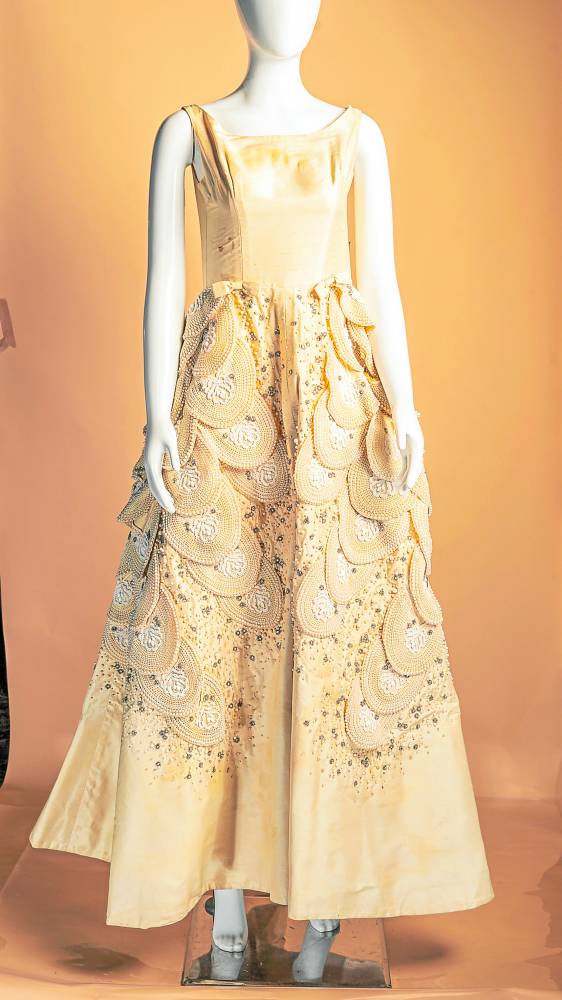
Maritess Pineda has been walking the talk.
An unfaltering picture of glamour and elegance, she has been championing Philippine arts, culture and design for years. As cofounder of Artefino, president of Friends of Manansala and director of Art House, Pineda has always found avenues to push for her advocacies.
And as she approaches 80, the retrospective show titled “Terno: Celebrating a Legacy Forged from Design and Art” serves as another way to merge her twin love for arts and fashion.
Opening on Oct. 24 at the South Court of the Power Plant Mall in Makati City, the exhibit looks back on eight of her ternos created by eight masters and picked out from her extensive and well-preserved—thanks to Pineda’s mother—archive to serve as prompts for contemporary artworks by a selection of eight artists.
While each chosen garment has played a crucial role in Pineda’s life’s milestones, she pointed out that her exquisite Ramon Valera debutant gown “started it all.”
The cream-colored A-line gown is as sweet as it is captivating, with intricate embellishments and scalloped detailing that could slacken the jaw in awe even in this day and age, as expected of a creation by the first National Artist for fashion.
Artists from Art House’s roster—including 0270501, Enon de Belen, Alvaro Jimenez, Ronna Manansala, Anina Rubio and Melissa Yeung Yap—took inspiration from couture creations by renowned designers like Steve de Leon and Patis Tesoro, as well as modern versions of the national dress by Bayo Atelier, Len Cabili, Jor-El Espina, Rajo Laurel and Cora Manimbo, to produce their pieces using indigenous fabrics like banana, abaca and piña fibers as the canvas.
Photographer-slash-fashionf designer Jo Ann Bitagcol joins the exhibit to showcase her signature photo prints on fabric, while Tesoro the artist also makes an appearance through the display of never-before-seen studies of her artwork on local fabrics.
Diversity
The diversity of each of the terno representing each decade of her life is apparent, with no standard design to define the distinct “Maritess Pineda” look. However, one thing becomes clear looking through the select pieces from her collection: “It says that I really stuck to preserving our culture and heritage, doesn’t it?” Pineda said.
“When you see the attires that I wore, they are all inspired by Filipino creativity and ingenuity. But not only that. What attracted me most was always different from each other. It was never the same. And that’s how I am. I’m so diverse in my interests. I’m so diverse in what I want to do.”
Aside from promoting local fashion and craftsmanship, she also supports emerging artists. Pineda’s love for the art transcends decades, having started collecting artworks by local artists (“the likes of Manansala, Malang, Joya, Legaspi—all these artists who at that time were not yet masters, but became such good friends of mine”) in her 30s.
“Since my heart is very close to the arts, I really want to help the young artists evolve into something that they would never be able to evolve to if we did not help them, if we did not mentor them. So I really want to give them some opportunities to learn more and to be exposed to more opportunities.”
With the show doubling as a selling event, Pineda said they’re going to try to put together residency programs to help these artists.
Art House founder and CEO Carlo Pineda said he and his mom envision being able to help younger-generation artists surmount challenges, especially financial and exposure, through the artist residency.
“Because then we will be able to give them different contexts in making their art mature, and that’s very important. We believe part of the ecosystem we’re creating is not just artists and patrons, but also for us to develop coartists, of which the Philippines is very rich in talent,” he said.

